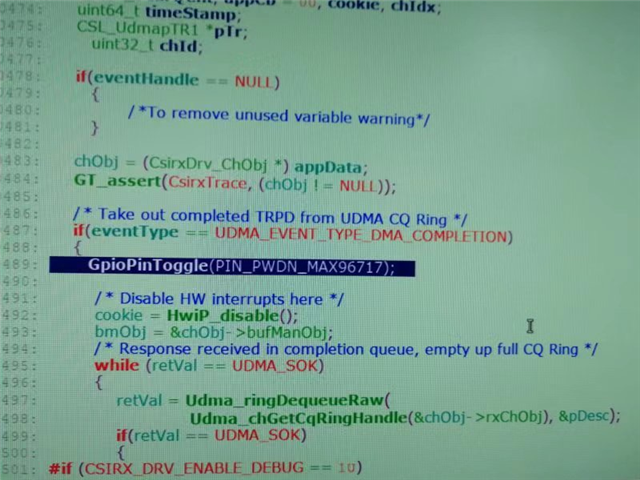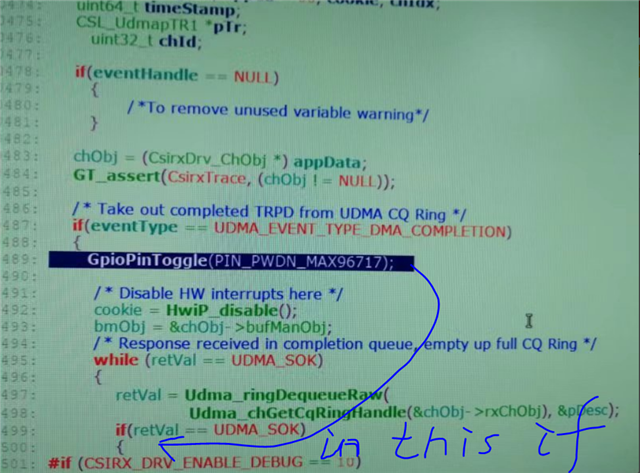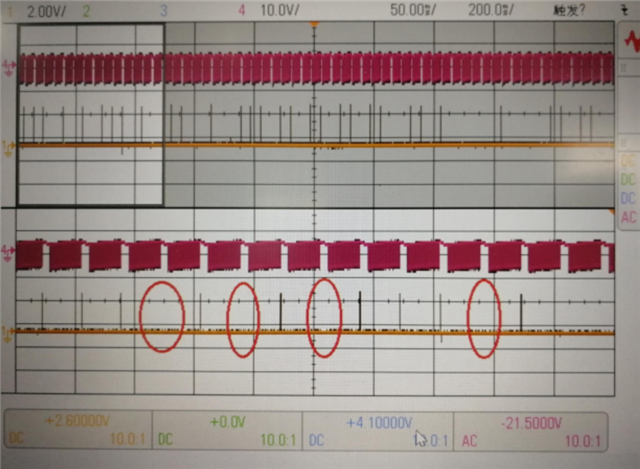Hi, Expert
Our customer have done an experienment about CSIRX module drop frame count. They insert an I-O Toggle into the callback function of frame capture(CsirxDrv_udmaCQEventCb).

They tested the waveform of MIPI and I-O Toggle.

Normally when MIPI's signal ends, the frame capture process node is in processing and go into the callback function, then I-O will be toggled. So you can see that I-O toggle will happen in the corner of the MIPI. But when power on, during the initial period, I-O toggle will happen in the middle of the MIPI waveform. They add a drop count frame code in the driver and find that when I-O toggle happen in wrong place, drop count value will be not 0.
So does Driver layer drop the frame occasionally in the CSIRX module, especially for the initial period of power on?
Looking forward to you reply. Thanks in advance.
Regards
Zekun



